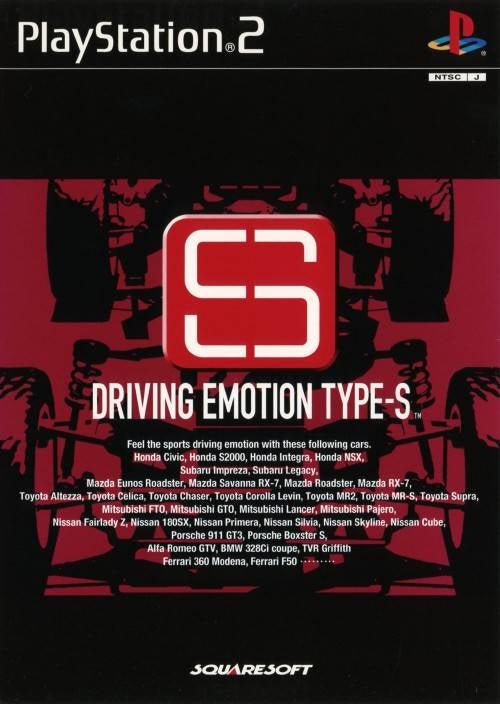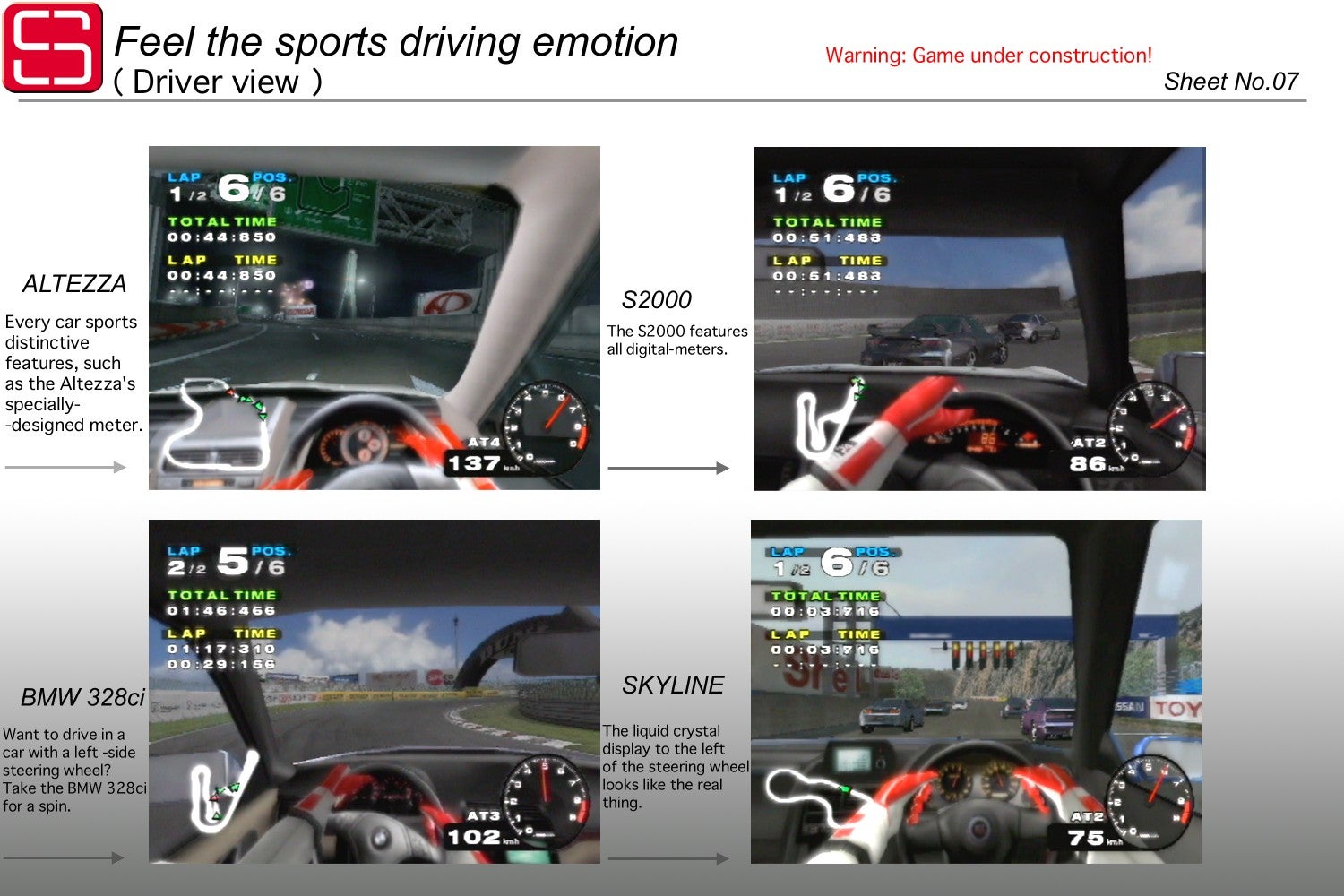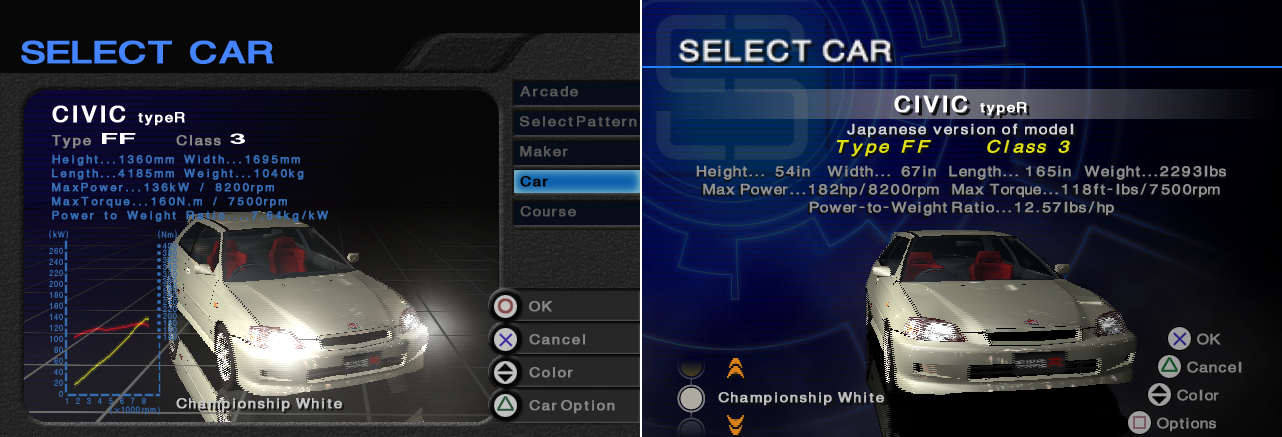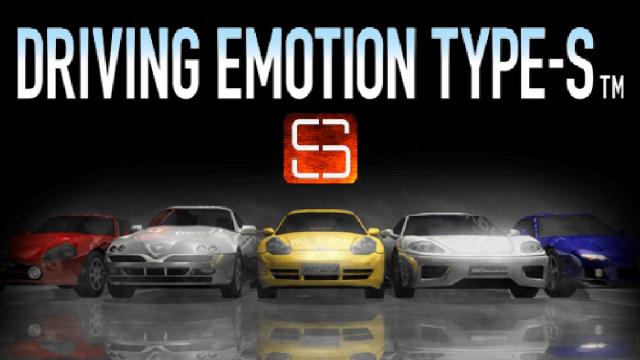“Many racing games have strived for this goal. Now technology has finally caught up with ambition, and racing games have entered a new dimension.”
So reads the copy on the back of Driving Emotion Type-S, one of the earliest PlayStation 2 games, released in March of 2000 in Japan. Type-S was published by Square EA, a peculiar joint venture between the two gaming giants where they’d release each other’s titles in their respective territories. It was developed by a studio named Escape. As far as I can tell, Escape never made another game.

Spend all of 10 seconds behind the wheel of any one of Type-S’s 43 cars, and you’ll quickly understand why this forgotten racer might be Escape’s only credit.
But I’m getting ahead of myself here; I promise this article isn’t intended to rant about an obscure, disappointing racing game few remember today. For some reason, I woke up one morning this week thinking about Driving Emotion Type-S, and visions of it have been swirling in my head since. But why?
To the game’s credit, it makes a striking first impression. The Japanese box art is gorgeous, with a red-and-black illustration of a bare chassis behind a wall of text. “Feel the sports driving emotion with these following cars” it reads, before dumping a litany of nameplates. That’s one way to sell a racing game, I guess.
It’s when you reach the end of that list that you’re met with a surprise. Among the roster are the Porsche Boxster and 911 GT3, as well as the Ferrari F50 and 360 Modena.
That was a very big deal at the time because Gran Turismo could never get Porsche or Ferrari. Even if it could, Gran Turismo wasn’t on the PS2 yet. In fact, GT3 didn’t show up until more than a year after Type-S in Japan, and six months after it in North America.
In other words, Type-S had the sim racing market all to itself on Sony’s new hardware for a short while, with exclusive cars it was probably only able to licence because of the collaboration with Electronic Arts. Lucky for Square, EA had partnerships with Stuttgart and Maranello.

This immediately put Type-S on gamers’ radars, as did another compelling feature: fully modelled cockpit views for every car in the game. That was a legitimately rare and impressive feat in 2000, considering most racing game devs didn’t jump on that bandwagon until the following console generation.
But Type-S wouldn’t be remembered for long. At best, the press dismissed it as a mediocre GT pretender; at worst, it was unabashedly panned. Edge Magazine counted itself among the latter camp, and explained why in a review from the July 2000 issue:
The developer may claim that this is as realistic a handling model as you’ll currently find. This simply isn’t so. By exaggerating the amount of wheel turn necessary to navigate the car at low speeds and doing the reverse for higher velocities, Square has come up with one of the most obnoxious handling models in recent history. After some practice, all of the cars up to and including Category 1 are manageable but the twitchiness of the JGTC vehicles becomes unbearable. And that’s with all the assists on — Edge challenges anyone to get a lap in without incidents in simulation mode and win that race.
Conflating realism with difficulty is a trap many racing game developers used to fall into back in the day, and Type-S is a shining example of that misguided philosophy. Japanese automotive outlet Response actually reviewed Type-S when it came out, and pretty much nailed the major issue with the handling (via Google Translate):
Anyway, it’s difficult overall. Every game is called “self-centering” and is set to naturally return to neutral when you release the key, but this game is extremely light. In other words, even if you don’t put the key on either the left or right side, you can’t run straight.
As a result, since it is not straight to the eye, the key is inserted and corrected, and the key is inserted again, which causes fluttering. Of course, considering the actual vehicle, just because you take your hand off the steering wheel does not mean that you will straighten it, so it is probably an excellent simulator. I think it is also good to set that the speed of returning to neutrality increases as the speed increases.
Type-S’s biggest handling bugbear is that steering never self-centres like it does in practically every other racing game. As Response speculates, I doubt this would’ve been an issue for anyone playing using a dedicated wheel. But on a controller, with an analogue stick or D-pad, it’s absolutely catastrophic. There’s the slightest hint of a pull back toward the centre after inputs in either direction, but it’s so lethargic that you often have to correct that with countersteer, then correct that correction. Inevitably the car swivels back and forth with increasing intensity upon each flick of the stick, every change in direction progressively amplified.
I actually feel Edge was a bit conservative in its challenge to its readership. I cannot finish a race on any of the game’s tracks, driving even the slowest cars, “without incident.” The trouble is that the incessant course-correcting eventually hurls you into a wall, and Type-S’s collisions are quite punishing. You lose very little speed when you hit something, but the game usually spits you back out at an aggressive angle that points you toward the opposite side of the track. You bounce from barrier to barrier before ultimately spinning and stopping dead. To add insult to injury, the steering becomes absurdly heavy when you try to turn yourself around from a standstill.

The funny thing is Type-S underwent tweaks to its handling model in between its Japanese and Western releases precisely because the earlier iteration was said to be undrivable. I’ve played the U.S./European version extensively, but had no experience with the Japanese one until just before writing this. Having now tried it, I can confirm that Escape’s first stab at the physics was somehow even jankier. The core issues are the same, but grip is significantly reduced. That makes it shockingly easy to swap ends in anything — even front-wheel-drive cars like the EK9 Civic Type-R.
Among racing game fans, Driving Emotion Type-S’s legacy was never stellar, and the awful handling has aged like milk, particularly when compared to modern racers. Is it truly “all-time” bad, though? Of course you could unearth a Flash game or maybe Big Rigs: Over The Road Racing if you really want to experience the worst the genre has to offer. Type-S may be terrible, but it isn’t shovelware. If nothing else, it’s definitely ambitious — just like the back of the box promises.
I think that’s important, because art that is bad but ambitious will always have a sliver of redemption. That ambition is Type-S’s saving grace, the reason why every couple of months I’m inexplicably lured back to it, wondering if it’s magically gotten better in my absence.
At least I can always count on the soundtrack. Primarily composed by Shinji Hosoe, a.k.a. SamplingMasters MEGA, it’s no wonder one of the minds that gave Ridge Racer its signature sound contributed what is unquestionably the best thing about Type-S. The track embedded above, “F-Beat,” was one of the few pieces of music in the game written by another musician, Takayuki Aihara. Aihara, who also goes by J99 and worked alongside Hosoe at Namco, has delivered some Ridge Racer bangers of his own over the years.
Nostalgia plays its part, too. I remember being mystified as a child seeing Type-S on the shelf at Blockbuster months before my family owned a PS2. It was the kind of nonsensical name that sounded otherworldly cool to kid me, particularly because I didn’t know what “Emotion” meant and “Type-S” seemed secretive and important. Indeed, this game had a way of making anyone playing it very emotional, though certainly not in the way the developers hoped.
Somewhere between the aesthetic, the untapped potential of new technology, Square’s excessive self-confidence and those two crests all car nerds know, Type-S marked an exciting moment for the genre — miserable though it was to actually play. Somehow, that’s enough to make me revisit it. Besides, if I don’t, who will?

Comments